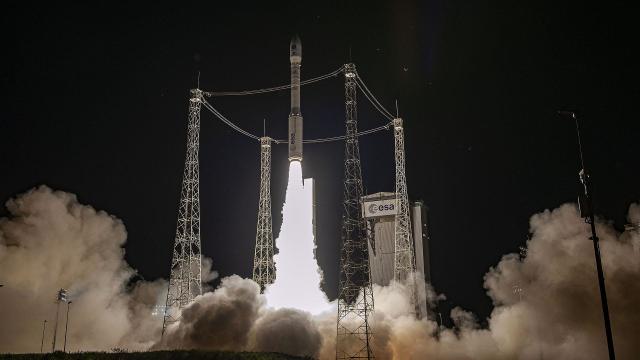Most of the starts are held jointly with Russia
The crash of the European Vega launch vehicle on November 17 came as a surprise to space experts. Before that, the European space program had long been considered one of the most developed in the world. Many call the cause of the disaster the explosion of the Ukrainian RD-843 engine. In this regard, it is worth remembering that most of the goals set by the European space Agency (ESA) are traditionally achieved through cooperation and joint projects with the American and Russian space programs. Details - in the material "Izvestia".
45 years of experience
European countries understood that they were unlikely to achieve serious success in space exploration alone — too large budgets were required. There was no way to compete seriously with the two space superpowers — the USSR and the United States — and so two international structures were created in the 1960s. One was developing the ELDO ("European start") launch system. The second was ESRO ("European space research organization").
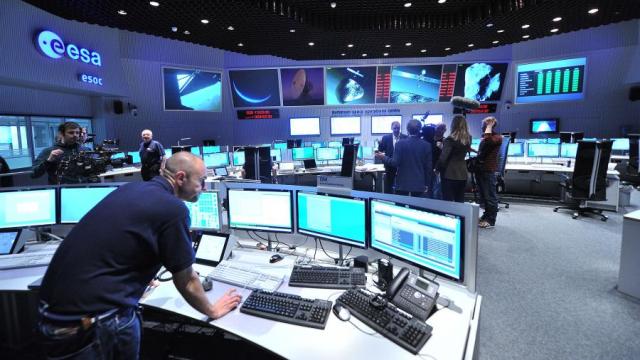
Photo: commons.wikimedia.org
Image source: iz.ru
In 1975, both agencies were merged into one European space Agency. Initially, the ESA included 10 countries: Belgium, Denmark, France, Germany, Italy, the Netherlands, Spain, Sweden, Switzerland, and the United Kingdom. Now there are 22 of them, and Canada is also participating in some projects.
ESA's top priority remains Earth observation applications. The second place is occupied by the cost of developing withdrawal tools. The most interesting thing is that many European countries have their own space programs that exist as if in parallel with the work in ESA. Moreover, their budget, such as the French space Agency CNES, is larger than that allocated by the ESA.
First of all we will develop missiles
The main pride of the European space Agency is the Ariane family of launch vehicles. Created jointly with France, "Arians" have been used since 1979. The Ariane-5 heavy launch vehicle was the most launched. Since 1996, 109 launches have already been carried out with a fairly high degree of reliability.
However, the first start of the "Arian-5" ended in an accident. There was an error in the rocket's software. Converting data from a 64-bit floating-point number to a 16-bit number caused the computer to freeze, and as a result, the rocket had to be blown up at the 34th second of flight. However, only two launches were unsuccessful and three more are considered partially unsuccessful.
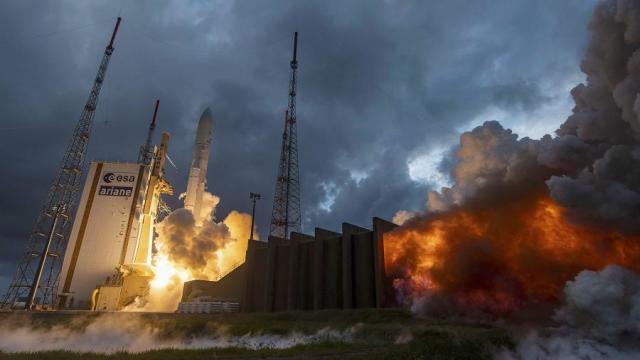
Ariane 5 during launch from the Kourou spaceport, French Guiana, January 16, 2020
Image source: Photo: esa.int
The relatively high price of Ariane made it not very competitive on the international market. Much more effective was the use of the Russian Proton, which holds the lead in the launch market among heavy launch vehicles. Nevertheless, Ariane-5 brought out a large number of communication satellites, not only European, but also American and Brazilian devices. The cost of launching Ariane-5 is estimated at $150-180 million.
If it was expensive in the noughties, now, after the appearance of the Falcon 9 rocket from SpaceX, "Ariane-5" began to work exclusively for the European market.
The Ariane-6 launch vehicle is currently in the final stages of development. It is supposed to be created in at least two versions-light and heavy. There are already more than six contracted launches for this rocket, including a launch with OneWeb satellites. According to the plan, the first commercial launches are expected in 2022 from the Kourou cosmodrome, where a new launch complex will be created.
Manned mission
The European space Agency even has its own manned program, although Europe does not have its own manned ships. In mid-1986, the pan-European Hermes program was planned to create a reusable spacecraft. This project was frozen due to lack of funds, and subsequently closed.
That's why ESA participates in the International space station program and uses ships from Russia and now the United States to deliver its astronauts. In the ISS program, Europeans work closely with the Americans, and therefore fly as part of NASA crews. Although the first European cosmonauts were Vladimir Remek from Czechoslovakia, Miroslav Germashevsky, a pole, and Sigmund Jen, a cosmonaut from the GDR, who flew under the Intercosmos program.
Members of the main crew of the ISS-60/61 expedition, NASA astronaut Andrew Morgan (left) and ESA astronaut Luca Parmitano before the launch of the Soyuz-FG launch vehicle with the Soyuz MS-13 manned spacecraft from the launch pad of the Baikonur cosmodrome, July 19, 2019
Image source: Photo: RIA Novosti/Alexey Kudenko
In 1990, a center was established in Cologne to train its own European cosmonaut team, which included several sets from different ESA member countries. The last at the moment, the fourth set of ESA astronauts took place in 2009 and consisted of six people. Three of them managed to fly into space: Italians Luca Parmitano and Samantha Cristoforetti and German Alexander Gerst. Most likely, in the near future, one of the European cosmonauts will fly to the ISS on the American Crew Dragon spacecraft.
Friendship with Roscosmos»
European space powers and Roscosmos have a long-standing and fruitful cooperation. At the same time, Roscosmos conducts some of its projects through the ESA, and some directly. Among the latter is the Russian — German project of the Spektr-RG telescope. Spektr-RG, launched at the Earth-Sun Lagrange point in 2019, has two x — ray telescopes-the Russian ART-XC and the German eROSITA.
Spektr-RG has now completed its survey of the entire sky. The angular resolution of the resulting view is less than one arc minute. And this is its uniqueness. Previously, a map of the entire sky with comparable clarity was available only in the soft x-ray range (at energies below 2 Kev) - it was obtained 30 years ago by the German ROSAT Observatory. In hard x-ray, there were only maps with much worse angular resolution-on the order of a degree of arc.
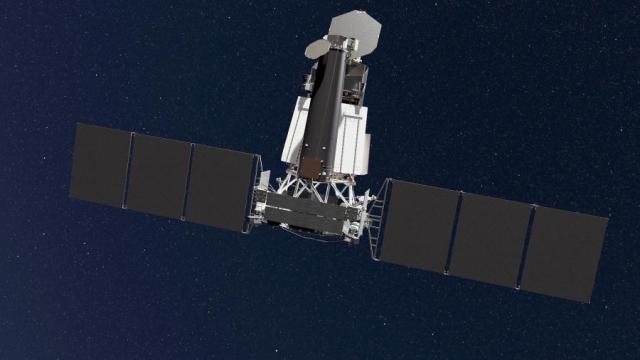
Spektr-RG telescope»
Image source: Photo: commons.wikimedia.org
During this time, scientists have discovered 10 completely new, previously unknown galaxies with active cores-supermassive black holes that currently absorb stars, planets and interstellar gas. A few weeks ago, with the help of the Spektr-RG Observatory, a new distant quasar was discovered at a redshift of 5.5. Sergey Sazonov, Head of the laboratory of experimental astrophysics of the ICI RAS, says: "such quasars are very rare, and so we discovered a new one, took the spectrum of this object and measured its displacement. We understand that this distant quasar is a huge black hole with a mass of a billion solar masses, which is very active."
https://www.youtube.com/watch?v=nAApjiZs6_k
The best example of cooperation between Russia and ESA is the ExoMars Mars mission. The second stage is currently being implemented. The first stage of the mission took place in 2016 and, unfortunately, was only half successful. The trace Gas Orbiter (TGO) module successfully entered Mars orbit and began its work on studying the red planet's atmosphere. But the Schiaparelli descent module failed to land gently on the surface and crashed.
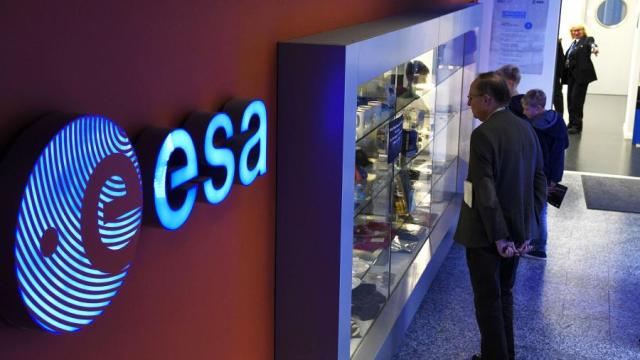
Photo: Global Look Press
Image source: iz.ru
In 2020, the second ExoMars spacecraft was scheduled to fly to Mars. Its launch was delayed due to unavailability and the pandemic, which significantly complicated communication between specialists from the two countries. The mission was moved to 2022, when we will see how the Russian landing platform "Kazachok" launched by a Russian rocket will gently lower the European Rover and many scientific instruments to Mars.
Mikhail Kotov
